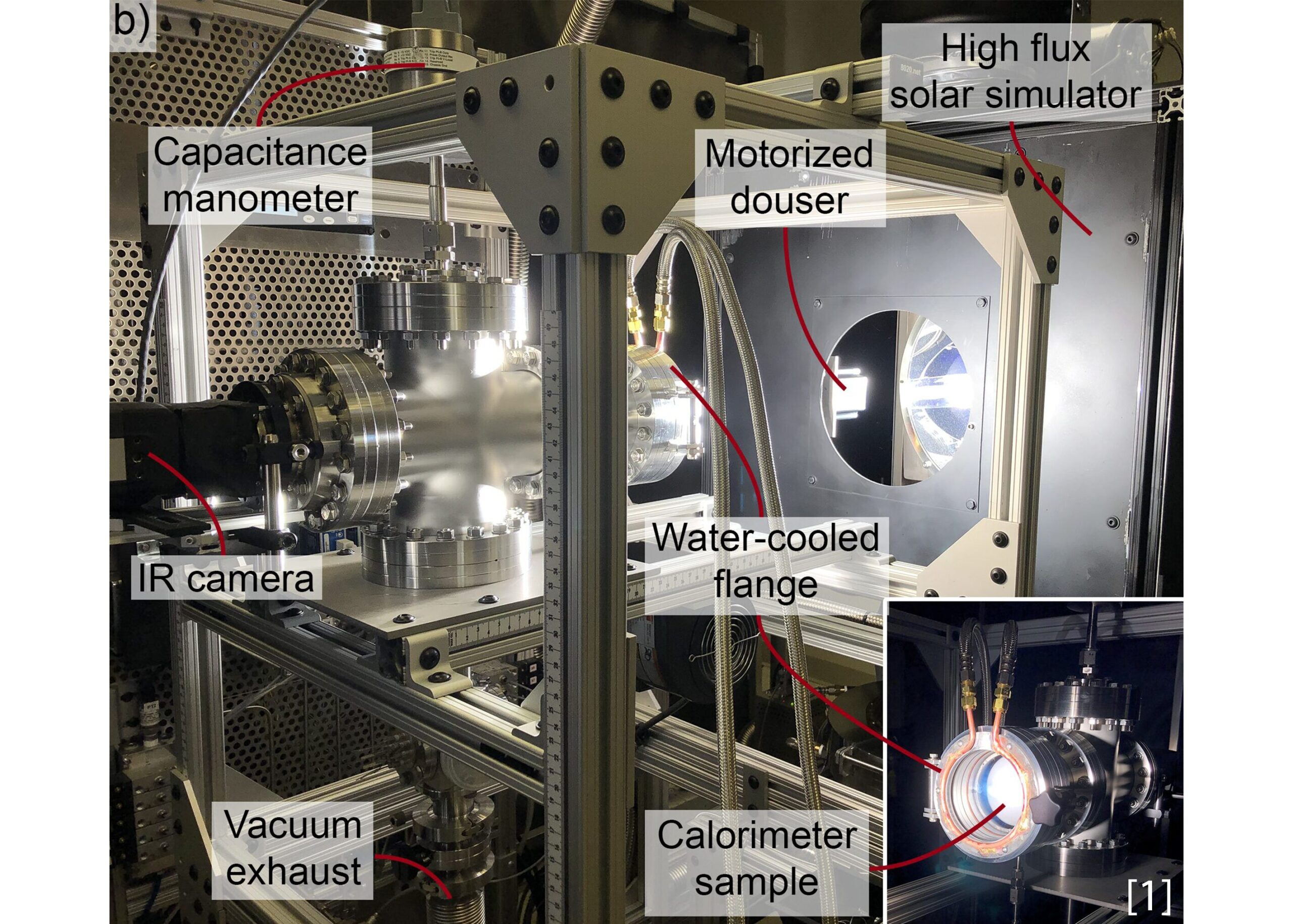- Develop a novel compact variable aperture mechanism integrated with flow channels in a cavity-type solar receiver.
- Regulate temperature and compensate of transient solar variations using PID and model predictive control methods maintaining the solar receiver’s average temperature within ±1.5 °C.
- Capture about 54% of the spilled solar power, which can be used to preheat feedstock for better efficiency or for another application.
A novel and compact variable aperture mechanism coupled to flow channels for recovery of spilled solar power was implemented on a cavity-type solar receiver to regulate its temperature and compensate for the sun’s transient variations. PID and model predictive control methods were initially numerically tested and tuned, and then experimentally tested using a 10 kWe high flux solar simulator for set point tracking and disturbance rejection under simulated sun’s direct normal irradiance. The variable aperture demonstrated a promising performance in regulating the solar receiver’s average temperature by maintaining it within ±1.5 °C of its set point under experimental transient variations. The aperture mechanism’s high performance was achieved while capturing approximately 54% of intercepted spilled solar power, which can be used to preheat the feedstock for better process efficiencies or made available to a secondary end-use process. Additionally, the aperture mechanism was shown to reduce the receiver’s temperature drop in the absence of solar radiation by closing the variable aperture blades which reduced re-radiation losses from the receiver’s cavity. Finally, two other control strategies were experimentally investigated, namely PID feedstock flow rate controller and PID multiple-input single-output controller that can manipulate both the variable aperture size and feedstock flow rate. In all cases and despite severe solar power fluctuations, the variable aperture mechanism demonstrated a promising performance in regulating the temperature in a solar receiver and compensating for the sun’s transient variations1.



